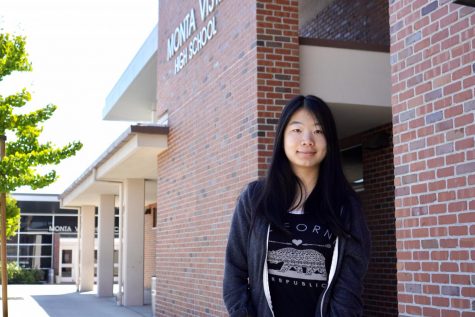Just teach it
September 27, 2018
As the school year begins, some students find themselves in a panic. They’ve completed their back-to-school shopping: fluorescent highlighters and squeaky-clean erasers are packed away, but there’s one thing that hasn’t gone perfectly to plan: the schedule they’re holding in their hands. Whether it’s a particular class or a requested free period, their schedule isn’t completely what they wanted. Yet, it isn’t just students who deal with this dissatisfaction — teachers, too, are sometimes assigned classes they hadn’t expected or necessarily wanted to teach.
According to AP Literature teacher David Clarke, teachers’ class assignments are determined by student preferences for classes. First, students go through the course selection process which allows the administration to determine how many sections of each class they’ll have. A couple weeks later, department chairs receive an Excel spreadsheet that specifies the number of classes for each course.
On the other side of that process, department chairs and administration send out forms to all the teachers, asking them what courses they would like to teach and their preferred free periods.
“There are two ways things are put on the schedule,” Clarke said. “One is, there are requests the teachers will make, and we try and accommodate them, I want all my courses after lunch … or before lunch, or something like that. And other times, there are things which are put up on the schedule right away, and they just stay there.”
For example, all the ELD courses are second period and all the sheltered courses are third period. The department chairs then try to arrange the schedule around these fixed classes.
“So now what we have is this massive [amount of] data where it says, these are the courses that we need to fill for students and the number of sections,” Clarke said. “These are what the teachers want, this is what the department leads and administration has said, all agreed to as to where certain courses need to go … And then I basically create a spreadsheet, which says, I have, I don’t know, say 20 sections of freshmen [literature] to fill. And then I just say, well, these … teachers are going to teach freshmen.”
Sheltered World Literature teacher Stacey Cler considers the process quite transparent: everyone in the department is allowed to see who is teaching what as Clarke fills in the spreadsheet. Cler does consider herself “the person” chosen to teach Sheltered or ELD classes, but she has no emotional connection to any particular class and would be fine teaching any English course.
“It’s my honor to be a teacher,” Cler said. “I love teaching. You know, I just love being in the classroom [and] being able to teach. I’m not emotionally attached to a certain topic.”
Clarke sends emails asking if a certain teacher wants to teach a particular class, but both Cler and Clarke acknowledge that teachers’ preferences are not the main priority when it comes to organizing classes.
“My first goal when I optimize [the assigning of classes] is I’m going to try and do the greatest good for the greatest number of students,” Clarke said. “Then, I’m going to try and accommodate the teachers. So students always come first.”
As a result, teachers aren’t necessarily able to teach all the classes they would like to teach.
“You can’t please all the people all the time,” Clarke said. “It’s never 100 percent. You can’t make everybody happy. It’s absolutely impossible to make everybody happy. So what you try and do is make sure that everybody gets something and that everybody gives up something at the same time.”
AP Economics teacher Pete Pelkey has experienced said dissatisfaction. When he first came to MVHS, he was assigned to teach AP Government, a class he wasn’t especially excited about. AP Economics grew in popularity, resulting in Pelkey solely teaching AP Economics. Yet once in a while, he returns to teach government.
“You have to change and you have to embrace it,” Pelkey said. “You can’t think, ‘Oh, I don’t want to do this. I don’t want to do this. I don’t want to do this.’ You gotta go, ‘I’ll do it.’”
Although the system isn’t perfect, Cler isn’t quite sure how it can be improved. She doesn’t fully understand the process herself but is confident that the administrators are doing the best they can do.
Similar to Cler, Pelkey doesn’t know if there’s a better way to assign teachers classes, and it is possible that someone may not be especially interested or the subject they are assigned to. Yet Clarke brings up the point that staff are paid to educate, not necessarily teach only what they want to.
“So that means we need to be willing to sacrifice for [the students …] and I know it doesn’t always work this way,” Clarke said. “But really, that’s the way it’s supposed to be. We’re supposed to be doing this for [students]. And we’re paid to do it. So because we’re paid and we have an obligation, we need to sometimes do things which make us unhappy.”
Cler has a slightly different point of view. The amount of happiness she feels teaching does not depend on what specific class she teaches. However, while she strives to be an excellent teacher, she believes it will be better for the kids if there are wide variety of teachers teaching the subject over the years, but ultimately sports the same “for the students” mindset as Clarke.
“Change is always good,” Cler said. “Because we can, you know, like these kids deserve the best people in the entire world.”



















